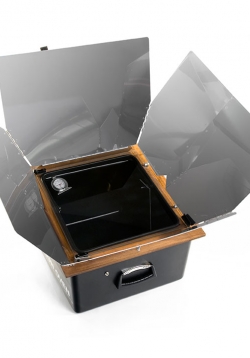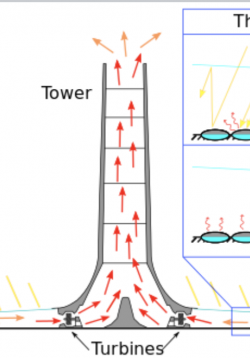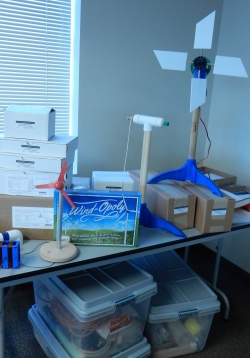Lerato Cooks Up a Plan
The teacher will begin reading aloud the realistic fiction book, “Lerato Cooks Up a Plan” from Engineering is Elementary. In this book, a young girl from Botswana learns science ideas that help her design a solar oven for her family. Students will reflect...
Professional Sun Oven
Students will view a professional solar oven in use and hypothesize how it works. They will do this through observing the oven in action as it cooks an egg, then recording their observations. This will be recorded in their energy notebooks.
Insulation
Students will learn about the importance of insulation in a solar oven. They will use their own background knowledge, as well as observations of insulation used to contain thermal energy, and determine how this will be incorporated into solar ovens.
Heat Conduction of Different Materials
After a demonstration using Amazing Ice Melting Blocks, students will conduct small temperature experiments using different types of materials. They will use what they learn to build their solar ovens and additionally answer discussion questions in their...
Solar Ovens: Choosing Colors
Students will conduct experiments using different colors of paper. During this process, they will make observations about the functionality of different colors when incorporated into design in relation to reflection and absorption. Students will use what...
Reflecting Sunlight
Students will see a demonstration and conduct a simple experiment on reflecting sunlight. During this demonstration, they will determine the purpose of the reflectors on a solar oven’s design and make observations about their functionality. They will use...
Solar Updraft Towers Unit Overview
Students will combine research, direct observations, and hands-on investigation to lead them into an engineering design project involving the construction of a solar updraft tower. During this process, students will make references to specific phenomena...
Informative Writing: Where Does Energy Come From?
This lesson is a (stand alone or in-unit) guided non-fiction research and writing project, which includes a differentiated choice menu and list of ideas for publishing the completed project. Each student will choose one of ten energy sources to research,...
Where Does Energy Go?
This lesson consists of six demonstration activities that show examples of ways in which water and air absorb heat to transfer energy from one place to another. These demonstration activities act as unique phenomena in which students can generate questions...
Wind Power: A Hands on Experience
This lesson challenges students to work in teams to design successful turbine blades for the “KidWind Firefly”. The firefly has an LED light that lights up when the students have designed turbine blades that spin effectively. This lesson provides students...





